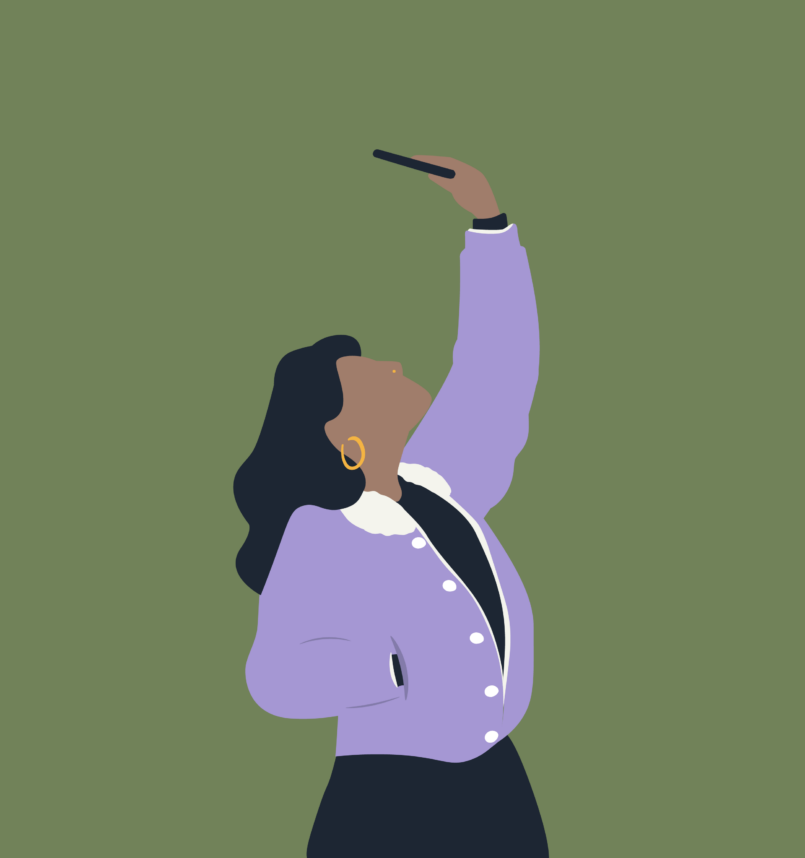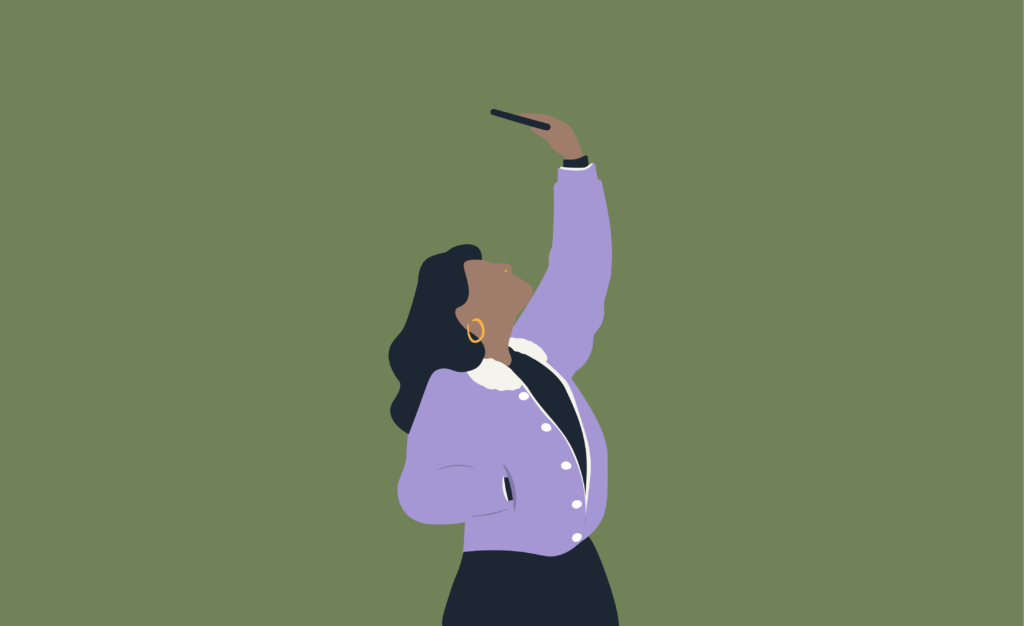THE OPPOSITE OF PAIN by Kaya Ortiz


I squeeze J’s hand tight. My heart is racing as I lie in the squeaky purple vinyl chair and stare straight up at the ceiling. A thin, sterile piece of fabric covers my face, with the exception of a hole for my nose where I’m about to have a piece of metal inserted.
The room’s sharp sterile scent reminds me of a doctor’s surgery, but the piercer, T, is wearing bright green shorts and has stretched earlobes hanging down to his shoulders. He talks me through every step of the process—how the sterilisation machine works, how everything they use comes in single plastic packaging, how he’s going to find the ‘sweet spot’ in my septum before he pierces me. T’s casual ease and the constant flow of information is a welcome distraction for my nerves. I focus on the timbre of his voice as he dabs the inside of my nostrils with cold iodine. J’s hand is in mine, squeezing back when I hear the countdown.
“Three, two, one, alright, now inhale,” T instructs. My breath hitches. I brace myself, every muscle in my body tense and waiting.
Then, the sharp sting. My face burns as water instantly floods into my eyes. I know this is normal. The eyes and nose are intricately connected, the nose allowing for the drainage of lacrimal fluid and tears from the eyes, and the eyes running in solidarity with the nose when seasonal allergies hit. J had told me how her piercing hadn’t hurt, only pinched. But some of these tears are definitely the result of pain, as much as I pretend that they’re not.
I never thought that I’d get my nose pierced. I’d entertained the idea several years ago, when my sister had gotten her nostril pierced at a dodgy walk-in place in Singapore. The small stud had looked good on her, but it seemed like unnecessary pain. Plus, a piercing would only draw unwanted attention to my wide, flat, Filipino nose. Yet here I am, a few weeks after my twenty-fifth birthday, a needle in my nose and warm tears running into my ears. I clench my jaw and tell myself that this pain will be over soon. A part of me still can’t believe I had the gall to choose it.
But I’m not the same person I was a few years ago. If anything, I’m more me than I’ve ever been.
Shame is the unwanted legacy I am learning to leave behind. It began with my nose, the nose I inherited from my father, and his mother, and who knows how many mothers and fathers before them. One trip home to the Philippines, realising my cousins and I all shared the same nose. All these people, all this love I carry with me.
It began in a closet I am still making my way out of. It’s shaped like the churches I grew up in, fear hammering in my heart. I am still afraid to tell my parents that I’m gay: I imagine disappointment, grief, long Bible passages while I grit my teeth and bear it. I carry secrecy with me, too. But I’m ready to let the shame go, so I’m getting my nose pierced.
In some ways, piercing seems like a kind of rite of passage, queer culture created by and for us queers, passed around in pockets of social media and found family. At sixteen, I learned the queer code on Tumblr first. Now, it’s my friend G with the shaved head and the septum piercing that looks so good on her it made me want to get one. It’s J’s vast collection of Converse sneakers and the handmade earrings spelling out ‘GAY’. Our ways of being are ways of seeing each other out in the wild, signals that we’re no longer in hiding, no longer alone. The pride pins, piercings, shaved and dyed hair: our queer codes, our literal badges of honour. And I am so ready to be seen.
Despite my large nostrils, I have a tricky nose to pierce. There is a patch of cartilage in the front of my septum that T reckons is scarring from getting hit in the face as a child. I have flashbacks to playing soccer with my cousins, the ball soaring straight through the air towards me. Tears in my eyes as I blink twice, three times. After avoiding the cartilage, the first poke with the needle comes out crooked. T goes in a second time to fix it, and my eyes are running like the leaking bathroom tap in my apartment. The wound is bleeding more than it should, T tells me, wiping at the blood with a tissue. But finally, he inserts the shiny metal ring, tipped on each side with an almost-translucent, icy-blue ball. He had helped me pick it out, showing me in a mirror how it glowed against my olive-tone skin.
“Alright, we’re all done,” he says. “Just be careful getting up, you might feel a bit lightheaded.” The chair squeaks as I sit up slowly, taking deep breaths and waiting for the light-headedness to ease.
“It looks so good,” J says, beaming as she releases my hand. “It looks like you’ve always had it.”
I stand up to look in the mirror-covered wall behind me. My dark hair is in a messy half-bun, my undercut overgrown like winter grass. My face is still blotchy from pain and the unavoidable crying. But my nose draws attention to itself, the fresh piercing gleaming. I ignore the small smear of blood and the throbbing pain, at turns sharp and then easing. I smile with all my crooked teeth.
Later, as we’re walking down the street, I take a selfie with J and send it to my friend. “CUTEEE denim gays haha,” G writes back. “You look great!!!”
I take another selfie in the car and send it to the family group chat. “Oh wow,” says the message from my mum. “I don’t like it, but I guess I’ll get used to it.”
My nose still stings, but for once, my mum’s comment doesn’t. I don’t need her approval this time. I am remembering who I am, who I’ve been all along, before anyone told me who I should be. It’s taken me twenty-five years to grow into my queer Filipino self. This identity comes with its own complications—years of denial and compulsory heterosexuality, religious and internalised homophobia, fear, shame, the longing to be free and visible and me. All this pain I didn’t choose, but what the world gave me.
Today, I get to choose my pain. Today, pain comes with sterile saline spray (use three times daily) and five weeks of healing time. It comes with J’s hand in mine, walking down the street in our unintentionally matching blue denim jackets. Today, my pain is also my joy. I’m shedding my armour for badges of honour, rainbow flags waving high. I’m uncovering shame and embracing pride and love in its place. After all, what is pride, if not the opposite of shame? And what is love, if not the opposite of pain?
Kaya Ortiz is an emerging writer and poet from the southern islands of Mindanao and lutruwita/Tasmania. A queer woman of colour, she is interested in histories, identity, heritage and language. Her poetry has appeared in Scum, Peril, Westerly and the 2020 Affirm Press anthology After Australia, among others. Kaya currently lives in Boorloo/Perth.
Copyright © 2020 Kaya Ortiz.
This story and corresponding images have been licensed to the Centre for Stories by the Storyteller. For reproduction and distribution of this story/image please contact the Centre for Stories.
This story was published on 2 October 2020.